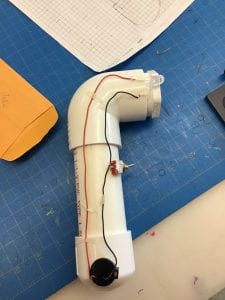
 This quarter I have learned so much about atoms, circuits, power tools, and so much more. We have done a bunch of projects this year we have made
This quarter I have learned so much about atoms, circuits, power tools, and so much more. We have done a bunch of projects this year we have made
Flashlights, switches, & necklace charms.
Before technology I vaguely knew how to make a simple circuit. After making switches and flashlights I now know how to make them and why they work.
These photos are of two angles of the technology room, (and people ”posing” for the camera.) They were taken during lunch recess, where my friends and I go for lunch to do fun crafts that we don’t get to do in class.
In tech this year we used tools that I didn’t even know existed. We used drill presses, soldering irons, and jigsaws. I’m not going to lie, l I was scared of all of them my first time using them, but after using them once I was no longer scared, but I was cautious. I have had so much fun in tech this quarter and I’m sad that it ends soon. 😭😭😭









 Yesterday in Tech we did the Breakout Edu challenge. How it worked was we got a box with three locks on it: a direction lock, a word lock & a number lock. The tables on my side of the room were a team and the tables one the other side of the room were a team. We had to find items around the room and use them as clues to help us figure out what the combinations were. I think our team did a really good job with communication and cooperation. I think this because we were all cheering each other on when we did something well. Also in the opposite, if someone didn’t have the right answer no one got upset with them. Over all, I think our group did a good job and that this activity was a great idea.
Yesterday in Tech we did the Breakout Edu challenge. How it worked was we got a box with three locks on it: a direction lock, a word lock & a number lock. The tables on my side of the room were a team and the tables one the other side of the room were a team. We had to find items around the room and use them as clues to help us figure out what the combinations were. I think our team did a really good job with communication and cooperation. I think this because we were all cheering each other on when we did something well. Also in the opposite, if someone didn’t have the right answer no one got upset with them. Over all, I think our group did a good job and that this activity was a great idea.